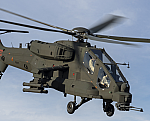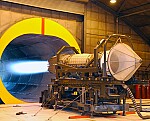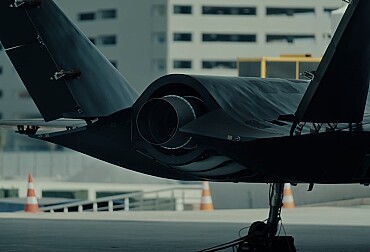Refueling the Future: Will budget constraints stall NGAS?
The U.S. Air Force’s plans to develop a next-generation stealth refueling tanker, known as the Next-Generation Aerial Refueling System (NGAS), are facing a significant challenge: funding. At the recent Airlift/Tanker Association Symposium in Grapevine, Texas, Air Force Secretary Frank Kendall issued a stark warning about the service’s ability to afford this critical modernization effort amidst a constrained budget environment.

A Critical Pillar of Future Air Superiority
NGAS is envisioned as a transformative capability that will enable the U.S. military to operate effectively in highly contested environments. Designed to replace and surpass current tanker fleets, NGAS is central to ensuring that next-generation fighter jets and drones remain fueled and operational during extended missions.
The strategic importance of NGAS is underscored by the growing need to counter potential adversaries, particularly China. In a hypothetical Indo-Pacific conflict, the vast distances over the ocean would necessitate multiple aerial refuelings, exposing existing tankers to significant risks. NGAS, with its potential stealth features and innovative designs such as a blended wing configuration, aims to mitigate these risks, providing a more survivable and versatile refueling option.
“The ability to sustain air operations over extended distances is a cornerstone of modern warfare,” Kendall emphasized. “NGAS will be critical to maintaining air superiority in a contested environment.”
Competing Priorities Stretching Resources
Despite its strategic significance, NGAS is just one of several high-priority programs competing for limited Air Force funding. The service is currently undergoing a wave of modernization efforts that include:
- B-21 Raider Stealth Bomber: A cutting-edge platform designed to penetrate advanced air defenses and deliver precision strikes.
- LGM-35A Sentinel Nuclear Missile: The next-generation intercontinental ballistic missile aimed at bolstering U.S. nuclear deterrence.
- Next Generation Air Dominance (NGAD): A sixth-generation fighter program that incorporates advanced technologies such as artificial intelligence and networking capabilities.
These programs are critical to the Air Force’s mission, but their overlapping timelines and high costs have created a perfect storm of budgetary challenges. Kendall candidly remarked, “Right now, given our commitments, our resources, and strategic priorities, it’s hard for me to see how we can afford any combination of those new designs. What I worry about the most is the adequacy of our resources.”
The Challenges of Balancing Modernization
The financial strain is further exacerbated by the rising costs of defense technologies. NGAD, for instance, has already faced scrutiny for its anticipated price tag, which has prompted a four-month review to explore cost-reduction measures. The Air Force is now reassessing its air superiority strategy, focusing on how NGAD, NGAS, and Collaborative Combat Aircraft (CCA) can work together to maintain dominance in conflict zones.
“The original vision for NGAD was created a decade ago under very different circumstances,” Kendall explained. “The threats we face today, advancements in technology, and our joint operational strategies have all evolved. These factors necessitate a fresh look at how we approach future air superiority.”
NGAS, while critical, may not escape this scrutiny. Its unique design—intended to break away from commercial aircraft templates—adds an additional layer of complexity and cost.
Why NGAS is Different
Unlike previous tankers based on modified commercial designs, NGAS is expected to be a purpose-built military aircraft with advanced capabilities. This includes stealth features to evade detection, a crucial advantage in contested environments where traditional tankers are vulnerable to enemy threats.
The Air Force is also exploring innovative concepts like the blended wing body, which could improve fuel efficiency and payload capacity while enhancing survivability. However, these advanced features come at a premium, making NGAS one of the most ambitious—and expensive—programs in the Air Force’s portfolio.
The Strategic Imperative
Despite the financial challenges, the case for NGAS remains strong. The U.S. military’s ability to project power and sustain operations in contested environments hinges on reliable and survivable aerial refueling. In a potential conflict with China, where adversaries possess advanced long-range missile systems, NGAS could play a decisive role in ensuring the success of air operations.
Additionally, NGAS aligns with the Pentagon’s broader shift toward joint operations with allied forces. By enhancing the range and survivability of allied aircraft, NGAS could become a force multiplier in coalition warfare scenarios.
The Path Forward
As the Air Force grapples with these competing priorities, several options are on the table:
- Phased Development: Spreading out NGAS development over a longer timeline to align with budget availability.
- Public-Private Partnerships: Collaborating with industry to share costs and leverage commercial innovations.
- Design Trade-Offs: Simplifying certain features to reduce costs while retaining core capabilities.
Kendall stressed the importance of making tough choices, noting that failing to adequately fund modernization efforts could jeopardize the Air Force’s ability to counter emerging threats.
Conclusion
The future of NGAS—and the Air Force’s broader modernization efforts—hangs in the balance. While the program faces significant affordability challenges, its strategic importance cannot be overstated. Balancing innovation, operational necessity, and fiscal responsibility will be critical as the Air Force seeks to maintain its technological edge and prepare for future conflicts.
The decisions made today will shape the trajectory of U.S. airpower for decades to come, determining whether the Air Force can continue to dominate the skies in an era of strategic competition. As Kendall put it, “Modernization is not optional—it’s a necessity. The challenge is finding a way to achieve it within the resources we have.”








